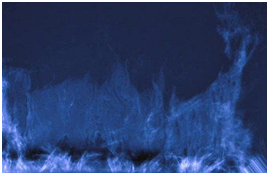Polar Crown Prominences
News: An object that appeared to be a wall of plasma on the surface of the sun was photographed by an astronomer in Argentina.
Polar crown prominences (PCP) are loops of plasma, or ionised gas, which are blasted from the solar surface by magnetic fields, similar to conventional solar prominences.
They occur at latitudes between 60 and 70 degrees North and South of the magnetic poles of the sun, and because the magnetic fields are significantly stronger there, they collapse back towards the sun.
They have the moniker “plasma waterfalls” as a result of their collapse back towards the sun.
A solar prominence is a noticeable feature that extends from the surface of the Sun.
These extend into the Sun’s scorching outer atmosphere, known as the corona, and are attached to its surface in the photosphere.
Stable prominences may remain in the corona for several months, looping hundreds of thousands of kilometres into space, and they originate over periods of around a day.
Plasma, a heated gas made of electrically charged hydrogen and helium, is the red-glowing looped substance.




